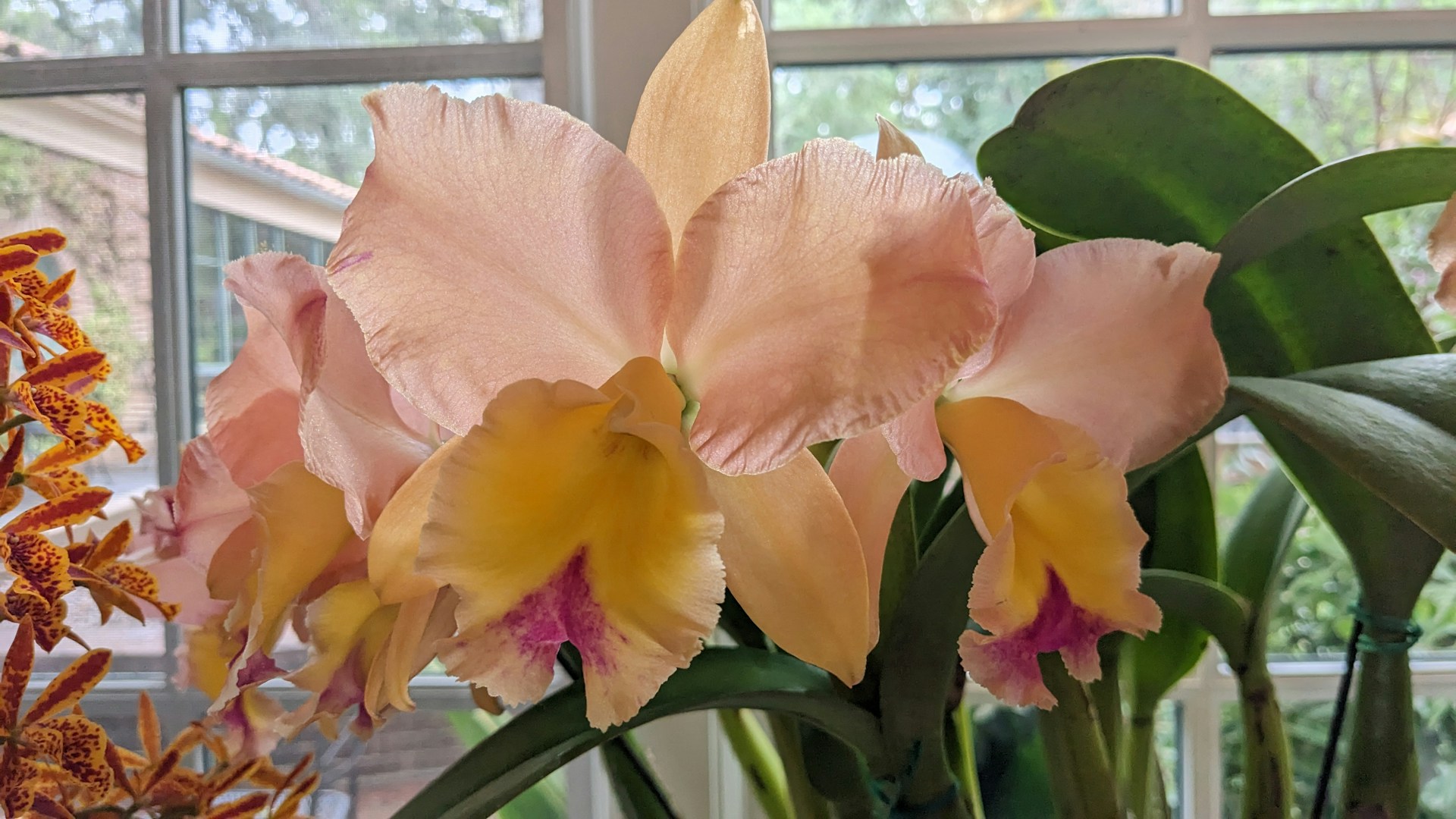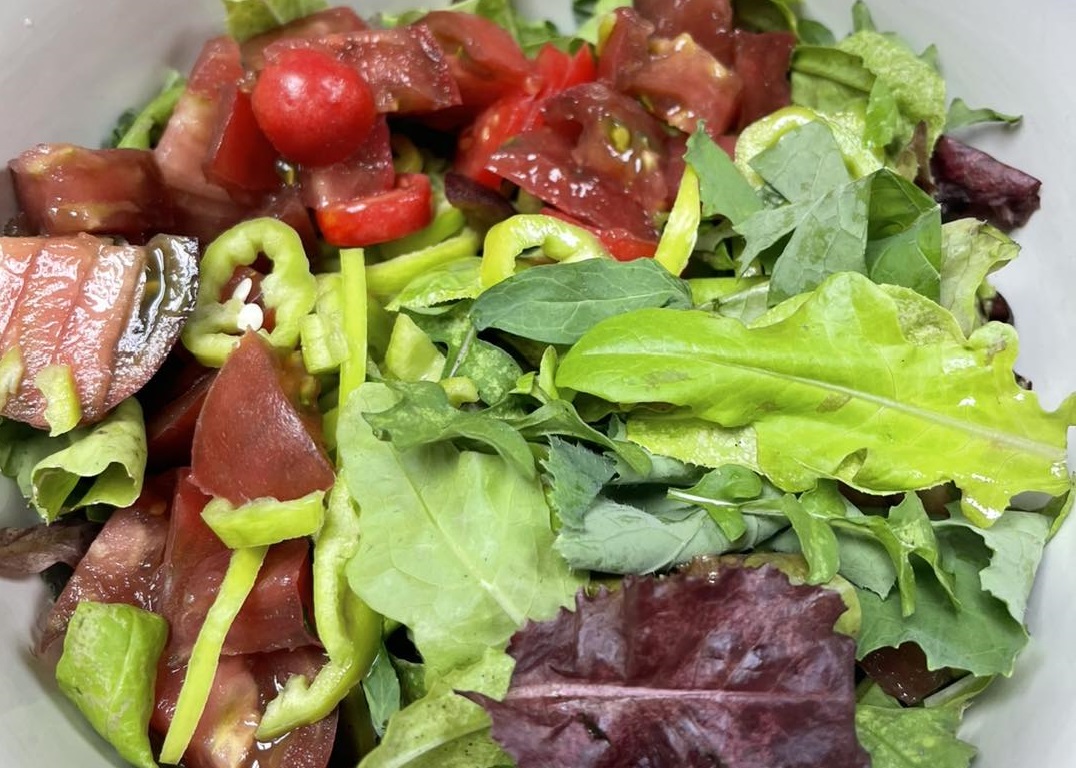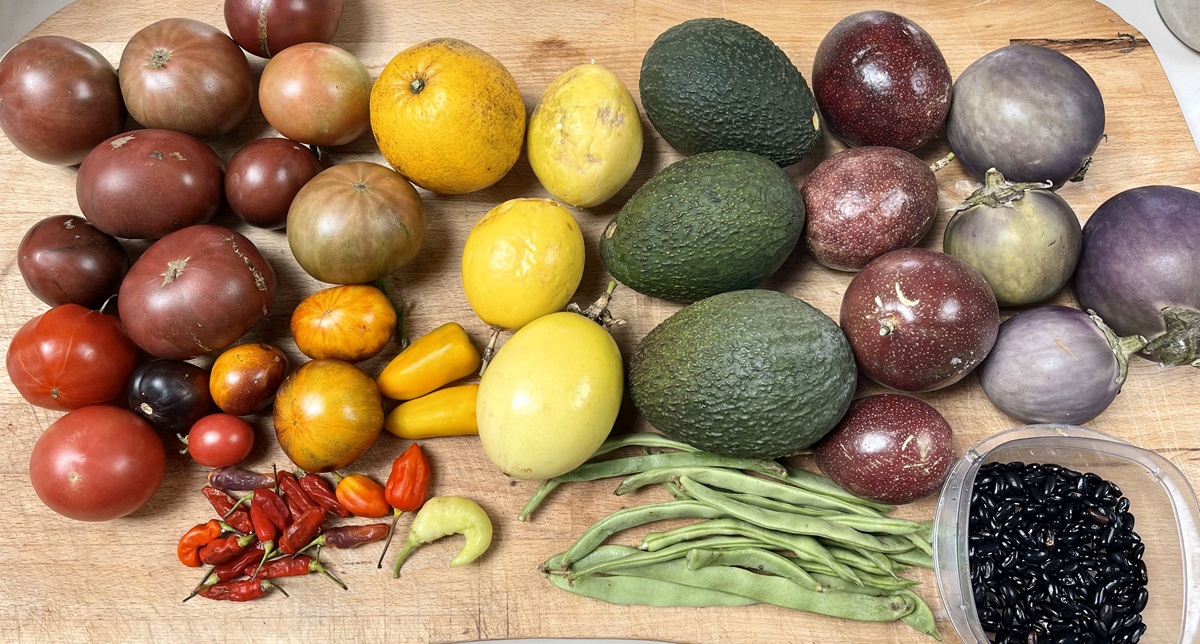Why I Grow Orchids—And Why You Might Love Them Too
Orchids have a reputation for being fussy, but I’ve found them to be some of the most rewarding plants to grow. With over 250 different orchids in my collection, I can confidently say that there’s an orchid for everyone—whether you have a sunny backyard in Hawaii like me or a small windowsill in a colder climate.
There’s something magical about orchids. Some bloom for months at a time, others release an intoxicating fragrance at night, and all of them have an elegance that makes them stand out from other plants. The variety of different orchids is staggering- it’s hard to believe plants and flowers with so much variety can all belong to the same plant family- Orchidaceae.
I grow my orchids outside year-round, thanks to the nearly perfect climate here. I often bring orchids into the house during their prime blooming time and put them in the kitchen or the living room, so we can really enjoy the blooms to the fullest extent. Once they’ve finished blooming, I put them back outside, where the light is generally better for their growth. I grow them in hanging baskets and pots in a moderately shady area of my yard. Some of my friends mount orchids on trees or have shade houses, but my trees are actually too dense and shady for most orchids. I’ve also experimented with slowly adapting a few Dendrobiums and Oncidiums to almost full sun in my front yard.
If you’re on the mainland, don’t worry—many orchids thrive indoors with the right setup. This guide will introduce you to different types of orchids, how their care varies, and how you can enjoy growing them, no matter where you live.
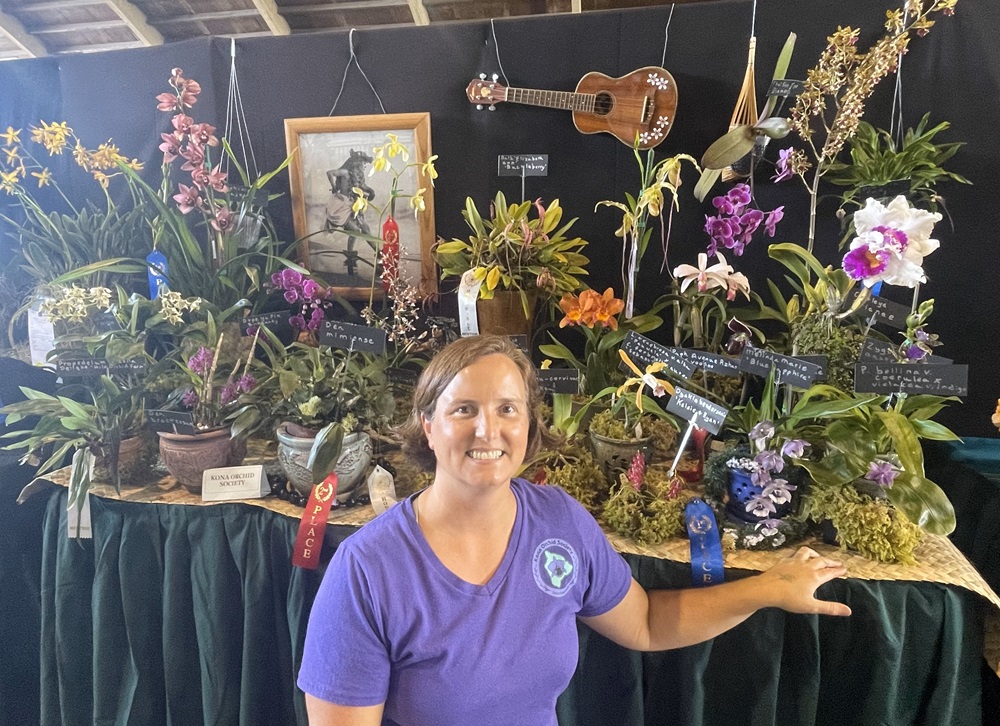
Orchid Genera & How Their Care Differs
With over 25,000 species and 100,000 hybrids, orchids come in an incredible variety. Here are some of the most common genera and how they differ in care.
1. Phalaenopsis (Moth Orchids) – Best for Indoor Beginners
Traits: Large, rounded flowers with broad petals, often in shades of white, pink, purple, or yellow. Thick, fleshy leaves at the base.
- Light: Bright, indirect light (east-facing windows work well).
- Watering: Allow the roots to dry slightly between waterings.
- Humidity: Moderate (50-70%), can be grown in most homes.
- Temperature: Warm (60-85°F).
Why I Love Them: These were some of my first orchids, and they’re the ones I recommend to beginners who want to grow indoors. They bloom for months and are generally pretty forgiving. I grow mine mostly outside now and sometimes they get 2-foot long spikes of flowers!
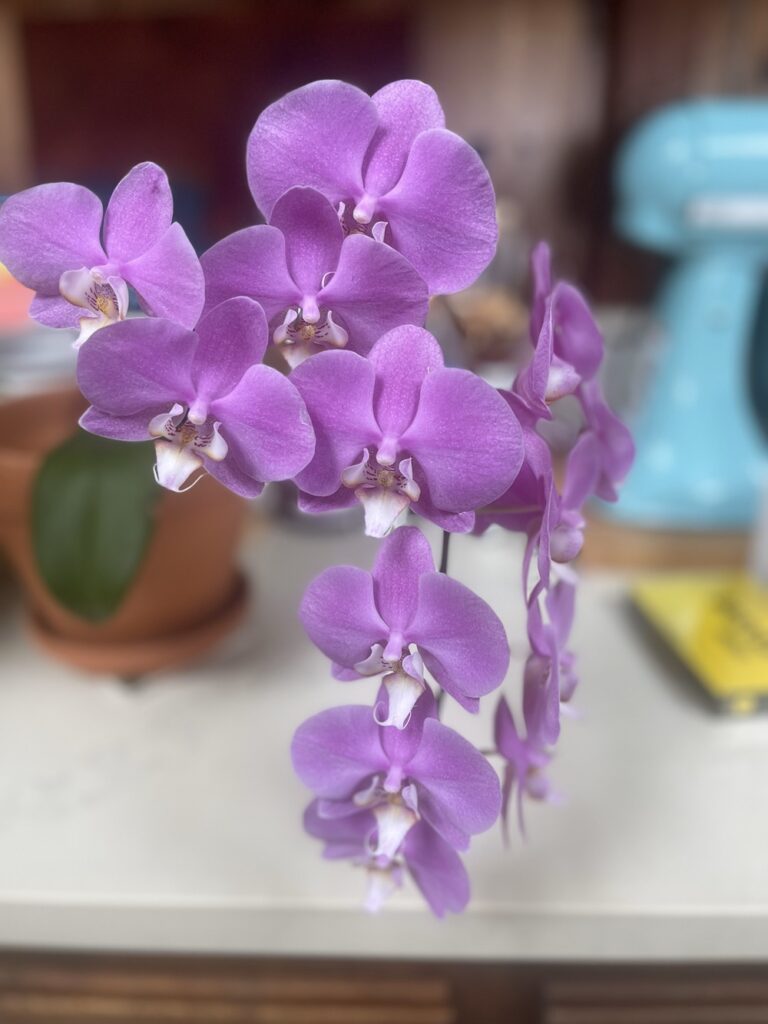
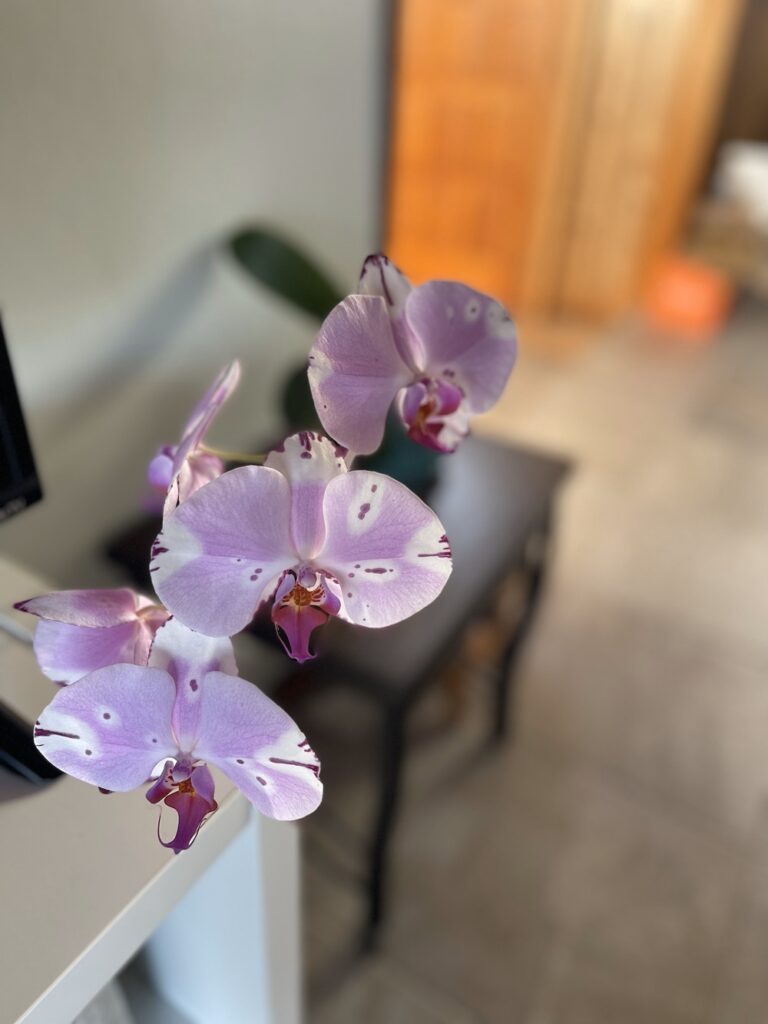
2. Oncidium (Dancing Lady or Butterfly Orchids) – Great for Outdoor Growers
Traits: Clusters of small flowers with a broad lower petal that resembles a dancing lady’s skirt. Some also have larger flowers that can resemble butterflies
- Light: Bright, indirect to partial direct sun.
- Watering: Likes to dry slightly between waterings.
- Humidity: High (60-80%).
- Temperature: Warm to intermediate (55-85°F).
Why I Love Them: Oncidiums are some of my favorite outdoor orchids because they are tough and adaptable. Many have sprays of tiny flowers that look like dancing ladies, and some (like Oncidium Sharry Baby) even smell like chocolate! I’ve successfully adapted a few to almost full sun in my front yard.
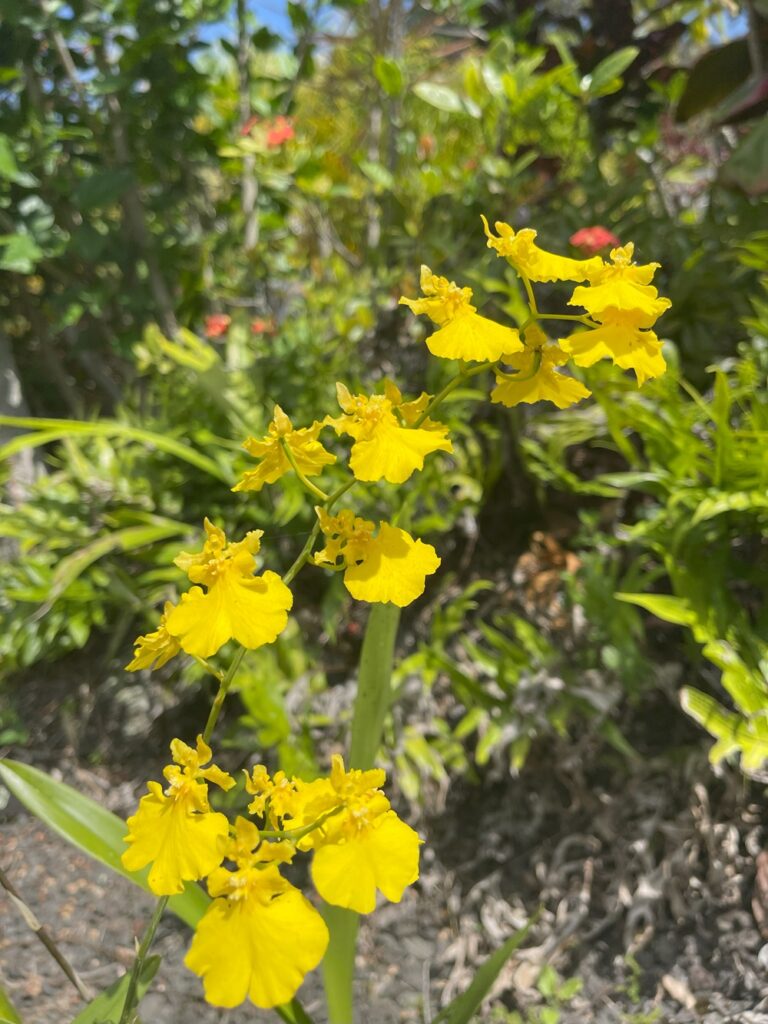
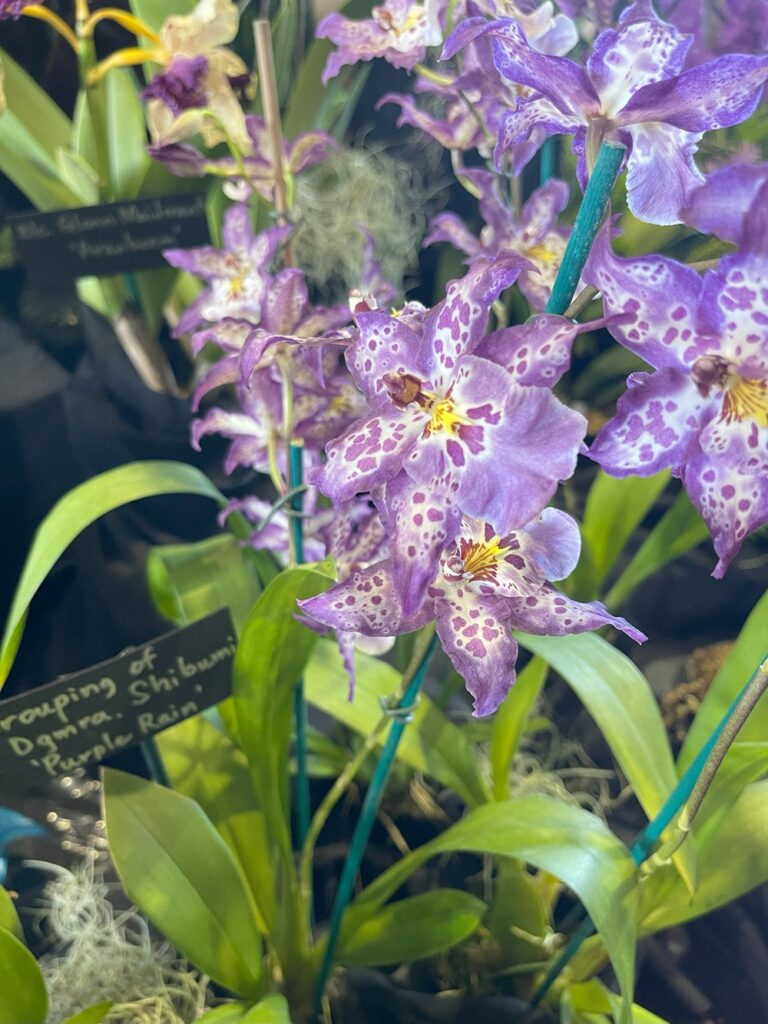
3. Dendrobium – The Resilient Orchid
Traits: Cane-like stems with clusters of small to medium, sometimes fragrant flowers along the stems.
- Light: Medium to bright indirect light.
- Watering: Likes to dry out between waterings.
- Humidity: Moderate to high.
- Temperature: Varies—some prefer warm temps, others like a cool winter rest.
Why I Love Them: I have some that bloom multiple times a year with almost no effort. My favorites are the antelope types, with 2 sepals that stick up and are twisted resembling antelope horns. I’ve also successfully adapted some to almost full sun in my front yard!
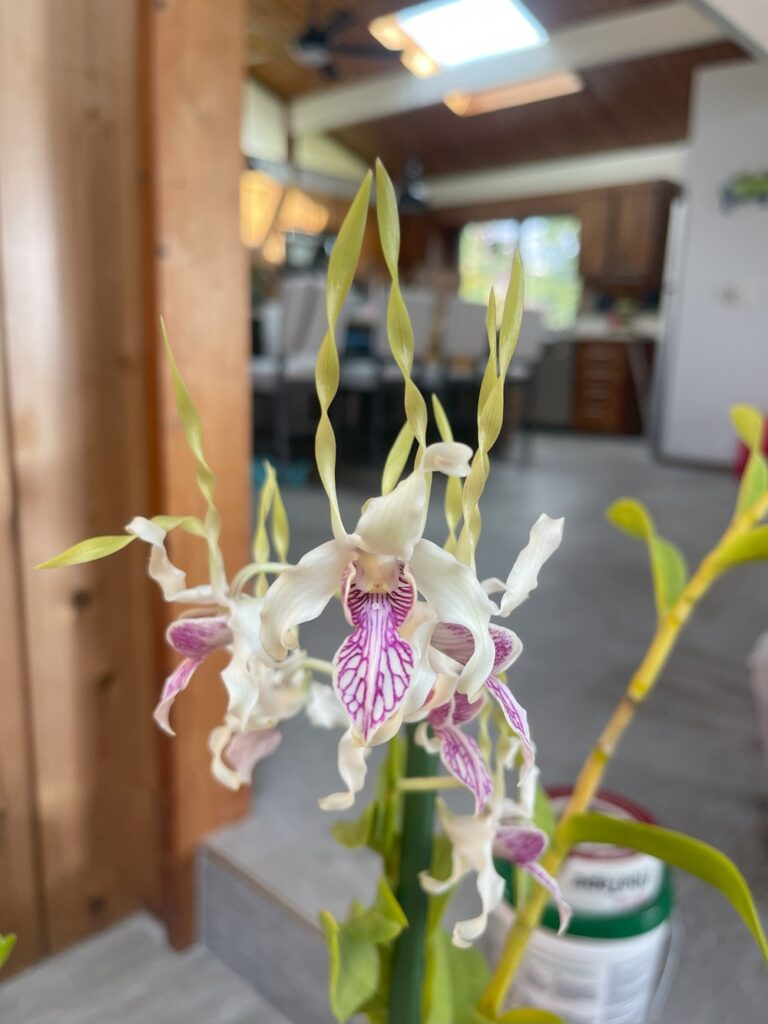
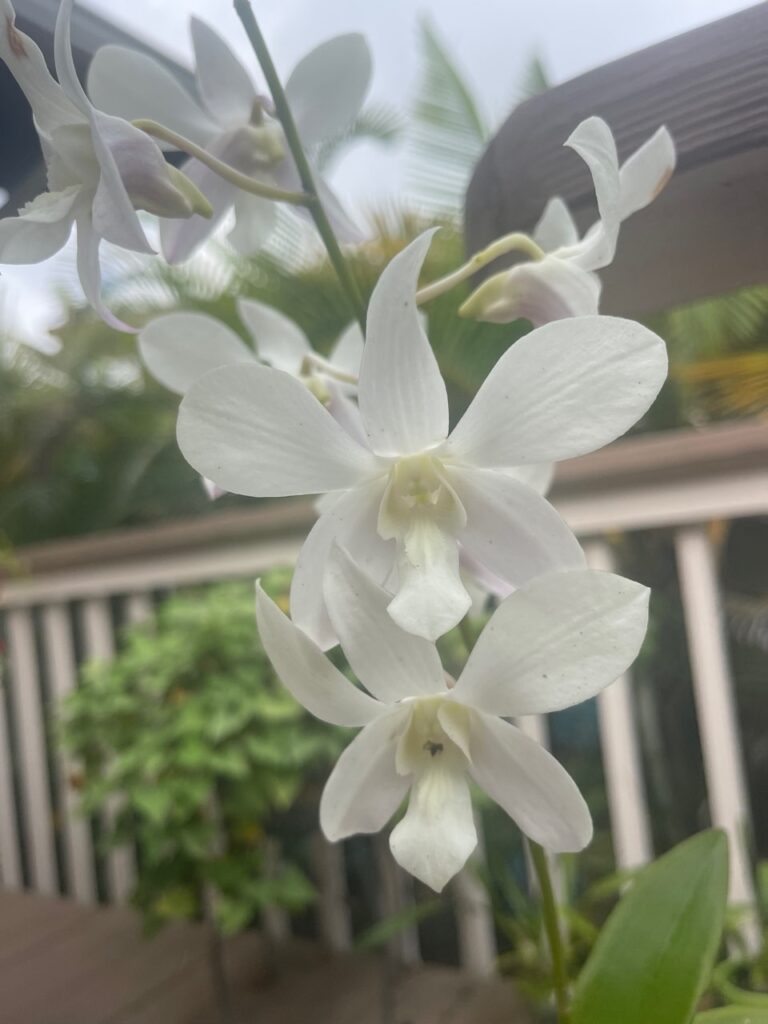
4. Cattleya – The Classic Orchid with a Big Personality
Traits: Large, showy flowers with ruffled petals and a fragrant lip, often in bold colors.
- Light: Bright, direct morning sun or filtered afternoon light.
- Watering: Let dry completely between waterings.
- Humidity: High (60-80%), benefits from misting or a humidifier.
- Temperature: Warm days (70-85°F), cooler nights (55-65°F) encourage blooming.
Why I Love Them: Cattleyas are some of my absolute favorites! They get big ruffled flowers and feel super exotic. Some Cattleyas have amazing fragrances—some smell like citrus, others like vanilla. I have some that fill the entire house with scent when they bloom.
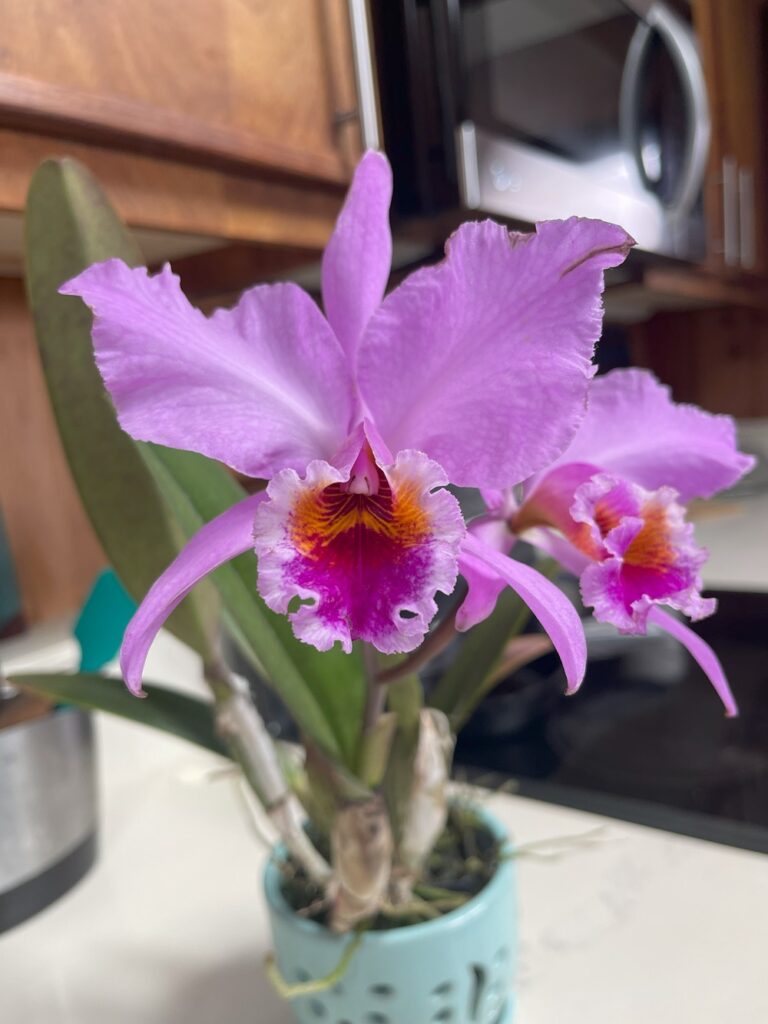
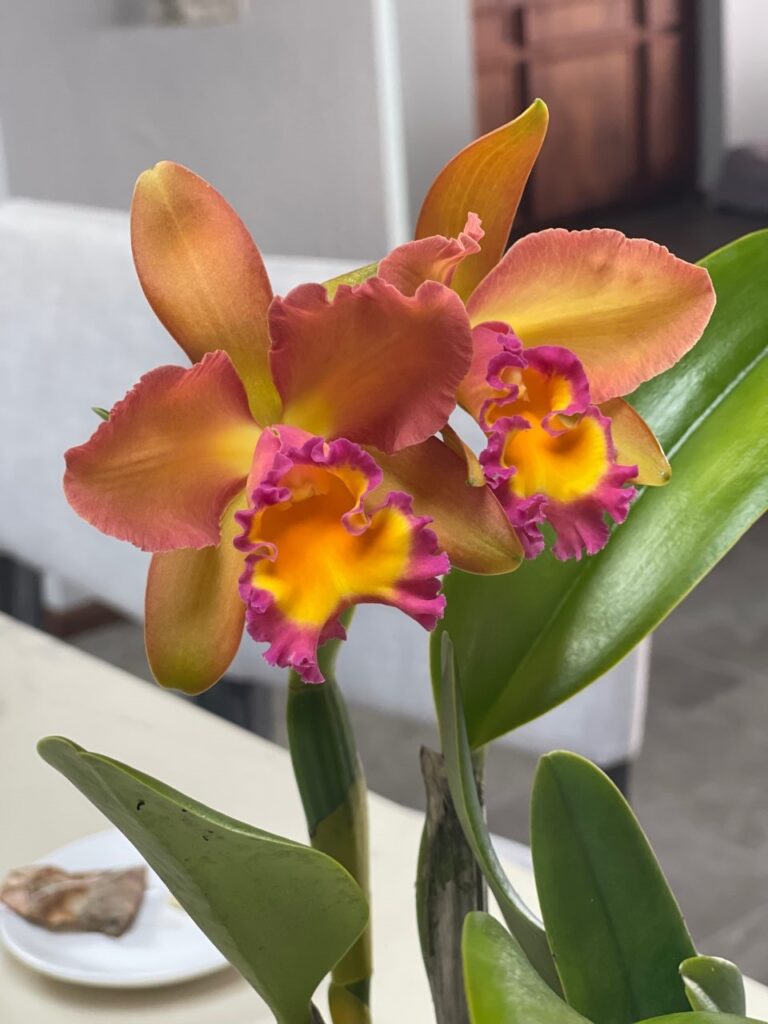
5. Vanda – The Aerial Orchid
Traits: Often grown without medium (like bark or moss), with thick roots hanging freely in the air. Large, dramatic flowers or many spikes of tiny flowers.
- Light: High light—needs full sun for part of the day.
- Watering: Needs daily watering in warm climates.
- Humidity: Very high (70-90%), thrives in tropical environments.
- Temperature: Warm (65-90°F).
Why I Love Them: I grow my Vandas hanging in baskets with no soil, and they love it! Their roots dangle in the air, soaking up humidity. My Vanda garayi had 13 flower spikes last year, it was covered in orange blooms!
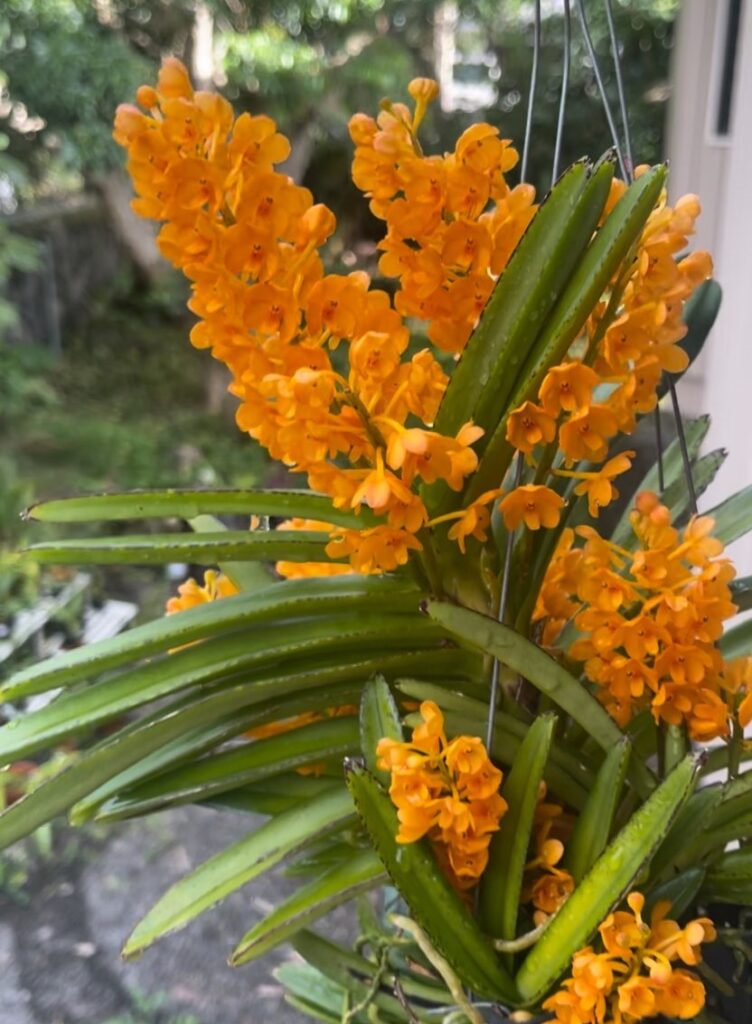
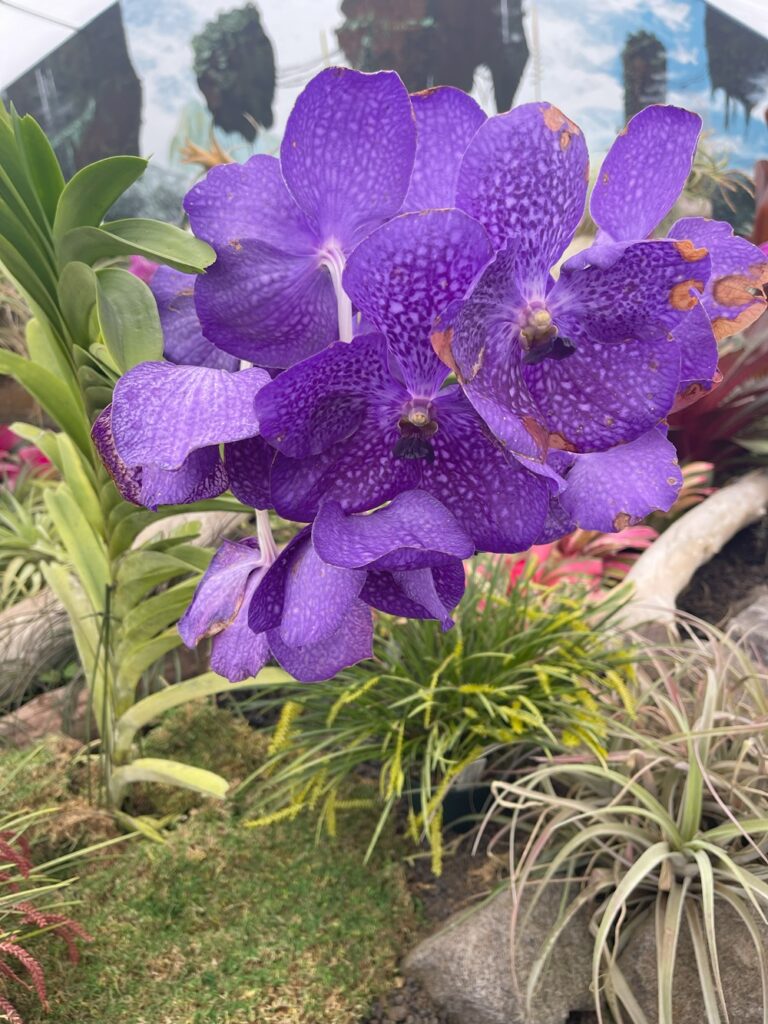
6. Paphiopedilum & Phragmipedium (Slipper Orchids) – The Unique Beauties
Traits: Distinctive pouch-shaped lip, often resembling a slipper. Some Paphiopedilums have mottled or green leaves; Phragmipediums often require more water.
Light: Low to moderate indirect light.
Watering: Keep evenly moist but not soggy.
Humidity: Moderate to high (60-80%).
Temperature: Intermediate (55-75°F).
Why I Love Them: Slipper orchids have an exotic, almost alien-like beauty. They do well in lower light than most orchids and have long-lasting flowers. Some of my Paphiopedilum flowers last for 2 months!
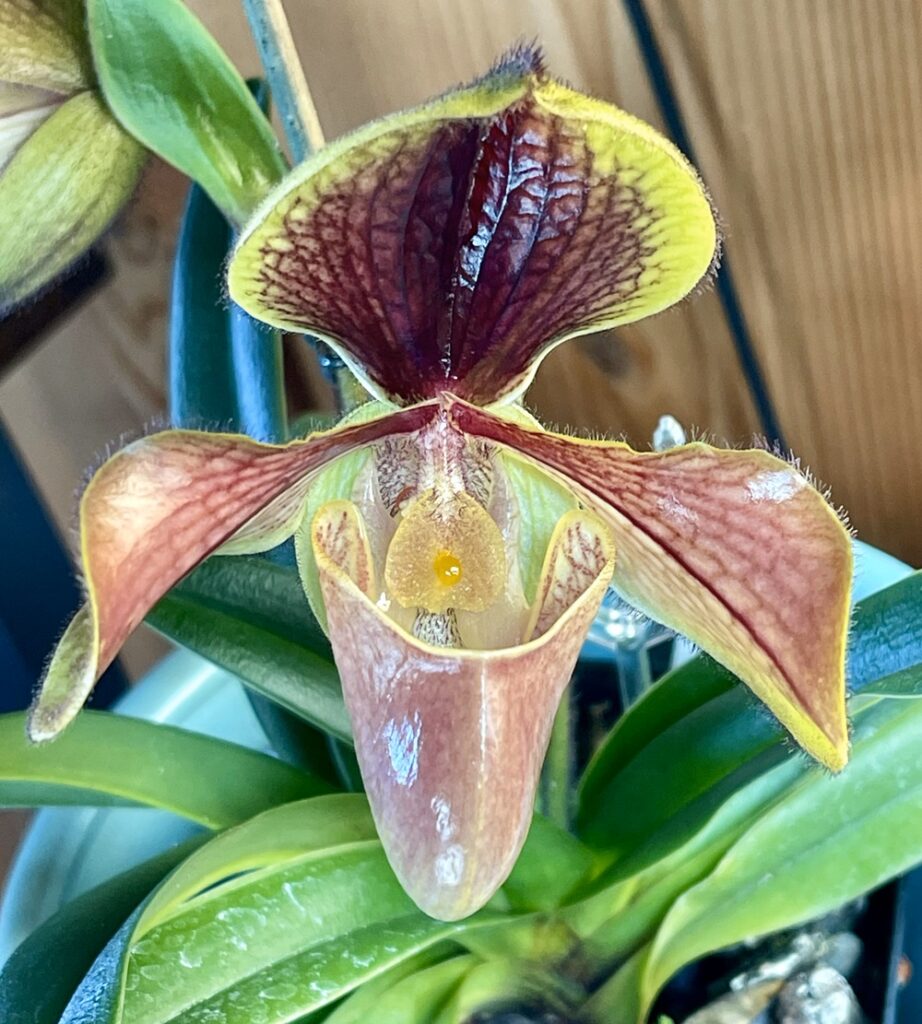
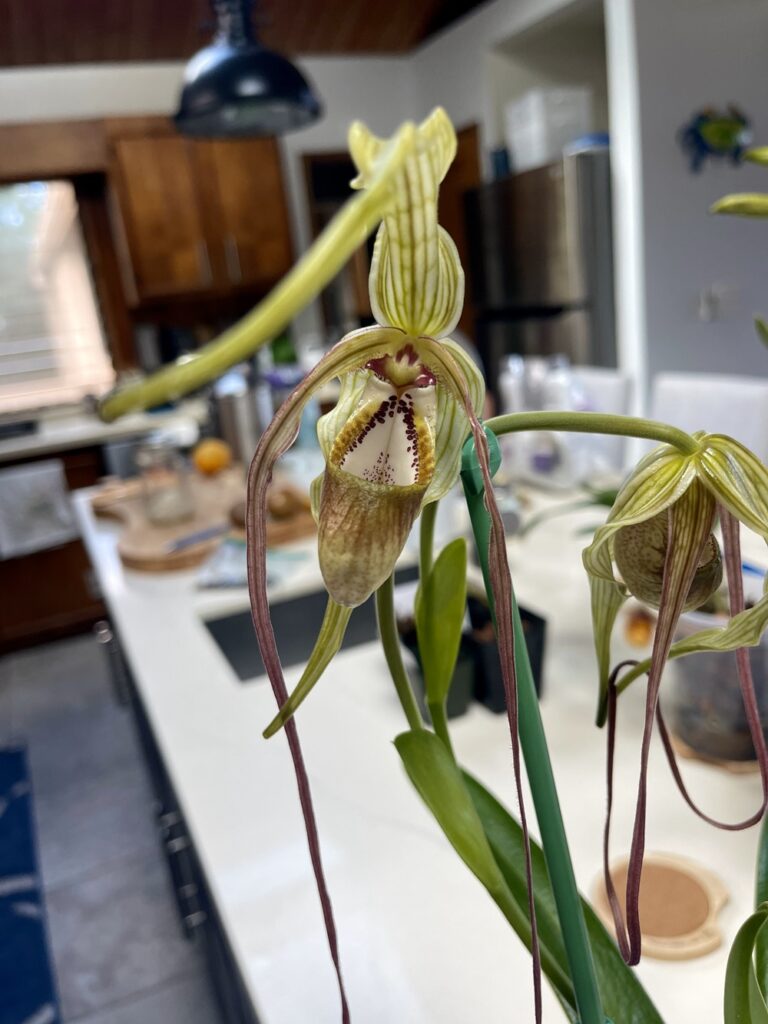
Growing Orchids Indoors on the Mainland
Most orchids have a difficult time in a typical house where humidity is low due to heat and AC. Creating a humid area is important.
1. Choose the Right Orchid
- Phalaenopsis (Easiest for indoor beginners)
- Paphiopedilum (Loves low light, great for offices)
- Dendrobium or Oncidium (Better for outdoor growers in mild climates)
2. Provide the Right Light
- Bright, indirect light (east or south-facing windows).
- Use grow lights if natural light is too weak.
3. Keep Humidity Up
- Use a humidity tray (a shallow tray filled with water and pebbles).
- Group orchids together to create a mini humid environment.
4. Water Properly
- DON’T use ice cubes! It may not necessarily harm your orchids, but they prefer room temperature water. Orchids like to get a good soak all at once, then dry out between waterings.
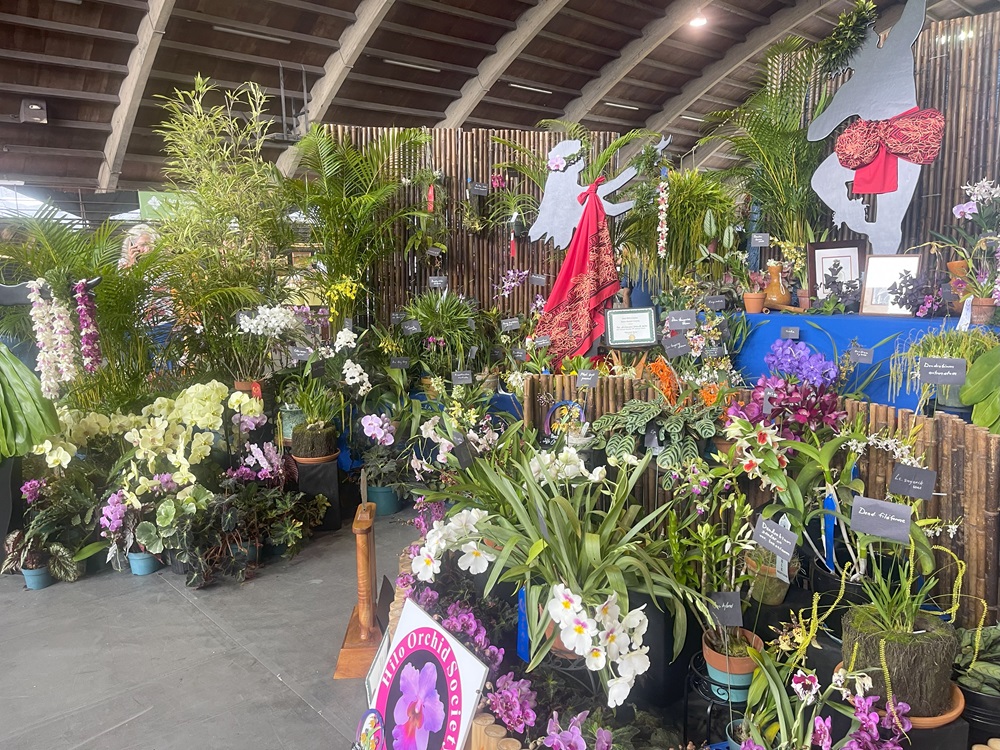
Orchids are far more diverse and adaptable than people realize. Whether you have space for just one or a whole collection, growing orchids can bring an incredible sense of accomplishment and joy. I hope this guide inspires you to try growing orchids yourself!

